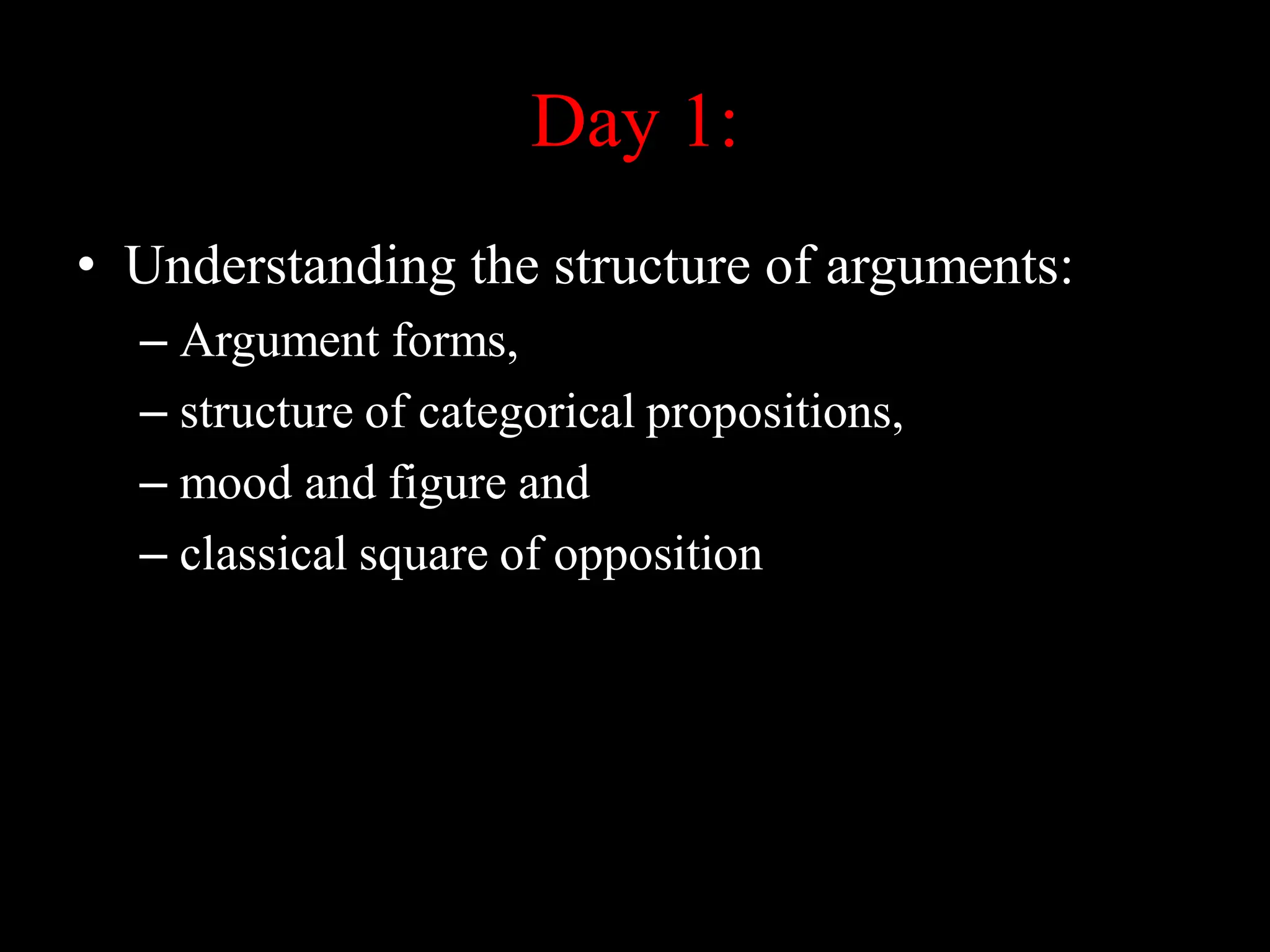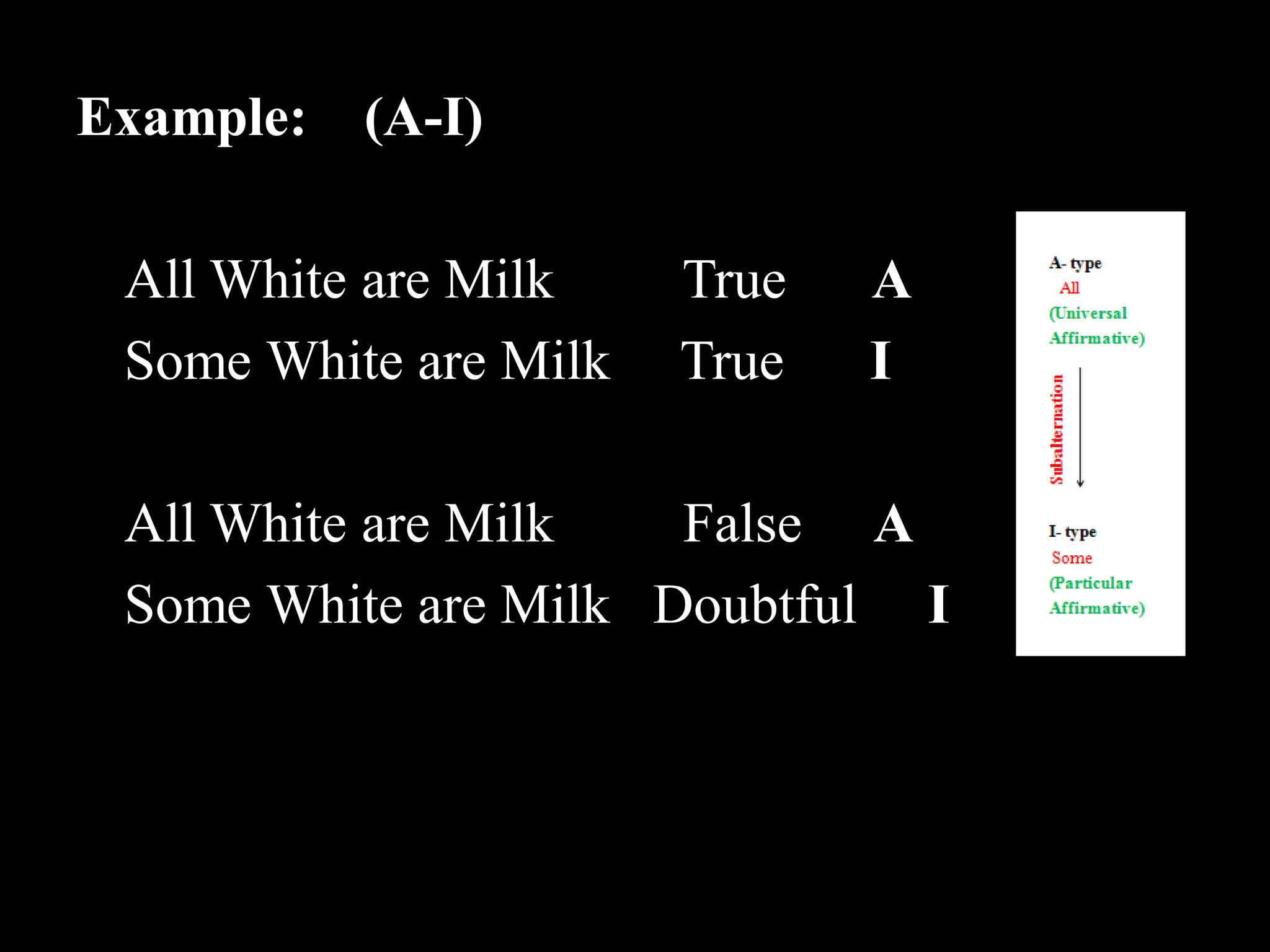The document discusses categorical propositions and arguments. It defines key terms like subject, predicate, premises, and conclusion. It explains the structure of categorical propositions using quantifiers and distribution of terms. It also discusses different types of arguments like deductive, inductive, and abductive. It explains mood and figure of categorical syllogisms using examples. Finally, it introduces the square of opposition and the four basic relationships between categorical propositions: contrary, subcontrary, contradictory and subalternation.























































